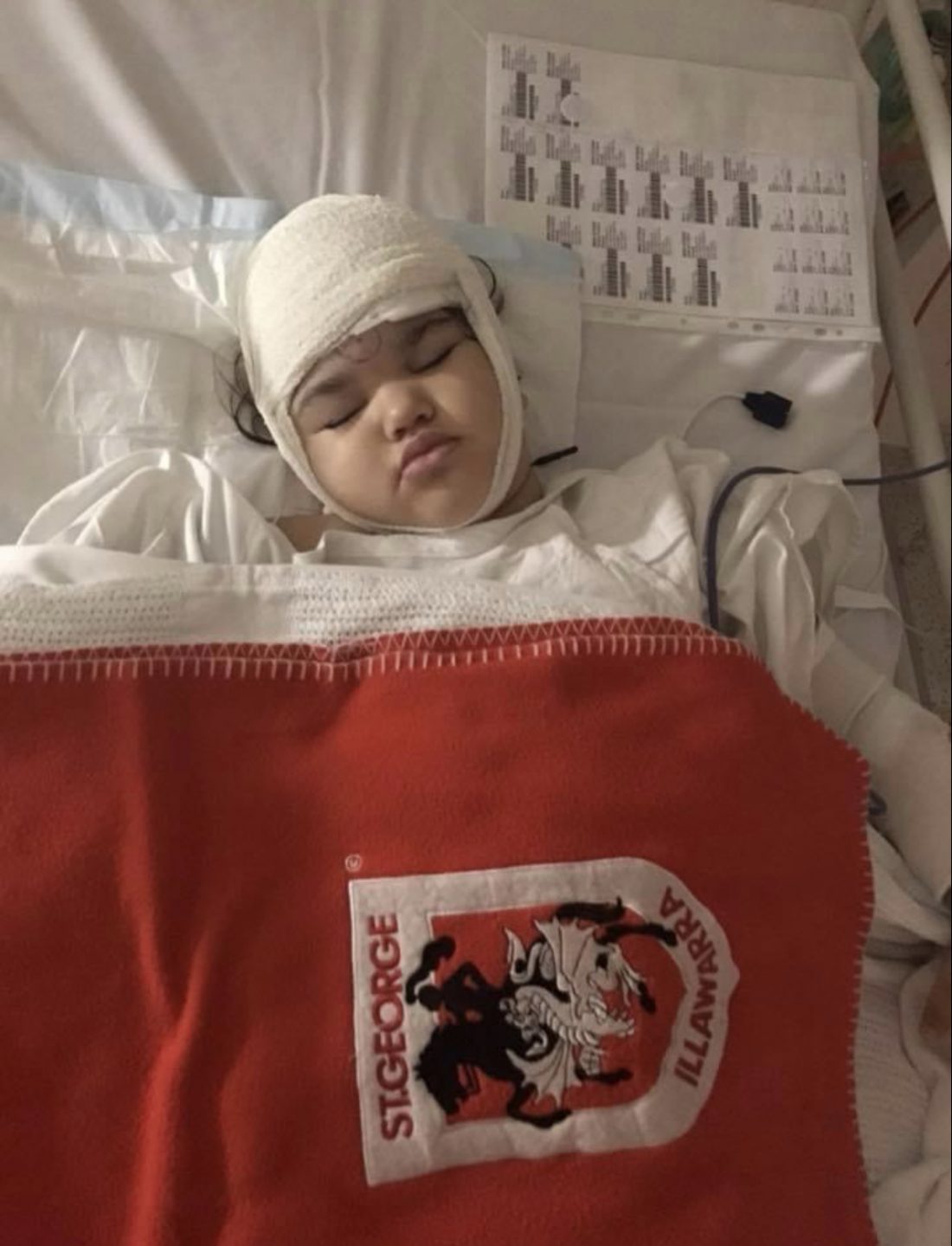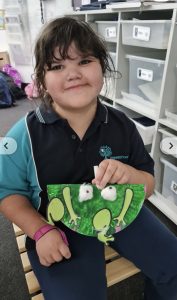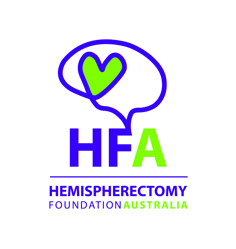
Hemi Hero: Paige
Born in 2014, Paige was a bright eyed and active baby beloved by her older brother Byron and mother Kelly. It was when she was just five-month-olds when Paige began to heavily favour her left hand when grasping for her favourite toys.
“It was more than a left or right hand thing. Paige kept her right hand at her side in a fist,” Kelly explained.
Concerned about muscle damage, Kelly began to look at massage therapy for her baby daughter’s arm. When there was no change to the use of Paige’s right hand the family explored help from a chiropractor, a physio and then a paediatrician.
“When we got to the paediatrician Paige got an X-ray, had her arm checked and it was all clear – then they said they wanted to do an MRI,” Kelly said.
“Honestly, I was hesitant, I was so scared of what they might find.”
Kelly’s fears about her little girl were confirmed later that year when an MRI at Monash Health revealed a cyst on Paige’s brain.
“I had a meltdown,” Kelly said.
“She was just nine months old by this time and we didn’t have any answers about what was next.”
“It was isolating that first diagnosis, I had my sister here, but my parents were both back in New Zealand.”
“We were told she may never walk or talk.”
Unbeknown to the family, the cyst meant Paige was also prone to having seizures.
“We didn’t know about the seizures when we first learnt about the cyst, that was a huge learning curve,” Kelly explained.
Paige suffered her first seizure when she was relaxing with her mum.
“I was laying down with her. She was in my arms and we woke up to her eyes rolling back in her head,” Kelly said.
The family called the ambulance, but soon became accustomed to the sight of seizures, medication changes and regular hospital visits.
“There were not a lot of options,” Kelly said.
“It was bad news after bad news. At twelve months they diagnosed her with epilepsy and her seizures were lasting up to four hours.”
“We tried different medications, different doctors and got tired of retelling our story.
“Sometimes we had to call the ambulance, other times we could manage it.”
Despite the ongoing seizures in November 2016, Paige began walking with the aid of a walker and started talking at the age of two.
“One day after speaking with our paediatrician telling them that nothing was working, they suggested the hemispherectomy.
“Again, it just seemed like more bad news. How could Paige live with half a brain? How is she going to function?”
After a lot of research, speaking to the Hemispherectomy Foundation support group, her family and further dangerous epileptic episodes, Paige underwent the surgery in 2018.
“We get told that surgery was the last choice if the medication doesn’t help, but we almost lost her to seizures. If we didn’t do it then what?” Kelly said.
The surgery took place at the Royal Children’s Hospital in Melbourne.
For Paige the subsequent recovery was short with Paige spending just two and a half weeks in the hospital after the 11- hour surgery to separate the connections to her left lobe.
“It is easier to say now we are on the other side, but they (the doctors) couldn’t believe it after they did the surgery. Paige was talking to us after the surgery, she was moving her right arm. No tubes, just the bandages around her head.”
Years on, Paige is now at a specialist school in Victoria enjoying life, making friends and learning, with a little help.
“We haven’t had any seizures since the surgery and if she didn’t have the little wobble walking you wouldn’t think there was anything wrong,” Kelly said.
“Some days she is the biggest princess, other days she is the hulk when she gets frustrated expressing herself – but she is so clever, she is writing, talking, we take it one day at a time,” Kelly said.
“She keeps me in check, and reminds ME when it is bin night – not the other way around.”
“The other day we found she wrote and attached a ‘no boys allowed’ sign on her door, it made me laugh to think how far she has come.”
“We are now five years seizure free.”

